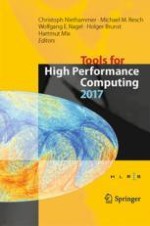This book presents the proceedings of the 11th International Parallel Tools Workshop, a forum to discuss the latest advances in parallel tools, held September 11-12, 2017 in Dresden, Germany.
High-performance computing plays an increasingly important role for numerical simulation and modeling in academic and industrial research. At the same time, using large-scale parallel systems efficiently is becoming more difficult. A number of tools addressing parallel program development and analysis has emerged from the high-performance computing community over the last decade, and what may have started as a collection of a small helper scripts has now matured into production-grade frameworks. Powerful user interfaces and an extensive body of documentation together create a user-friendly environment for parallel tools.


